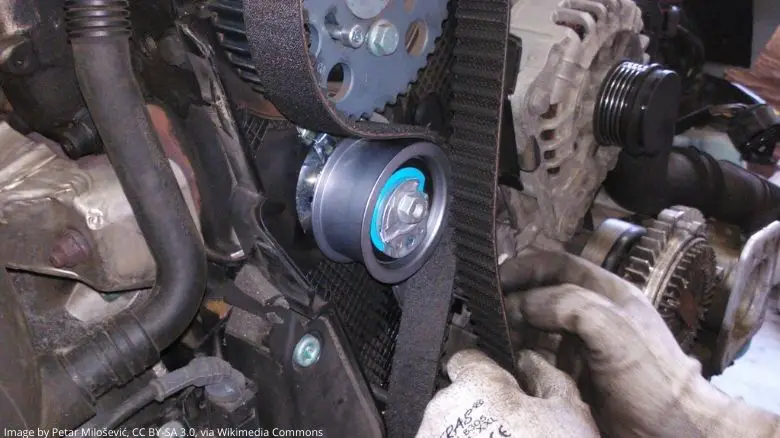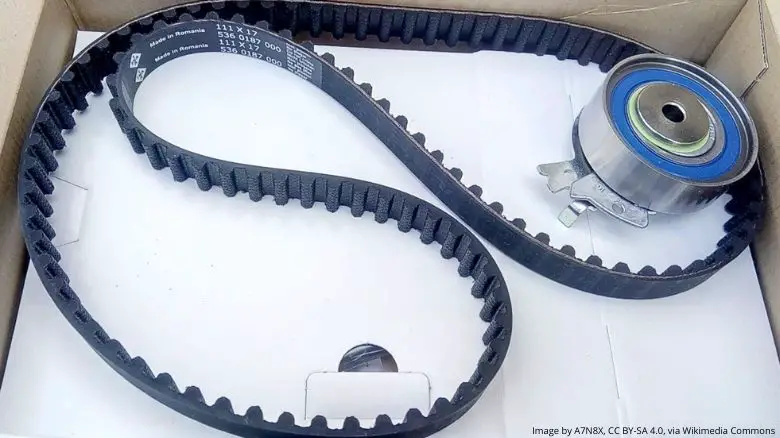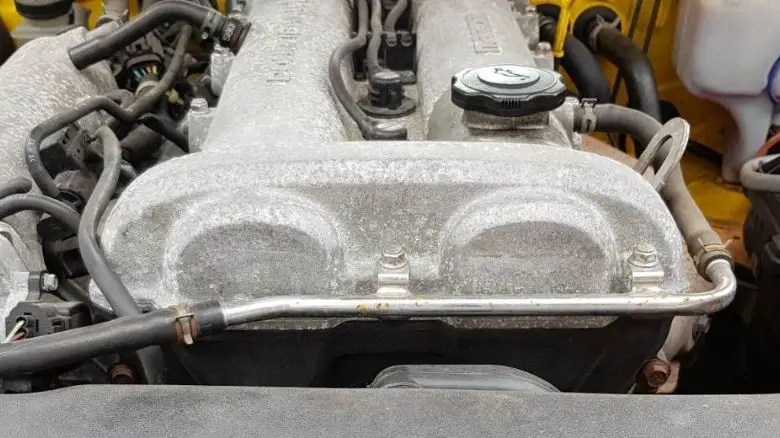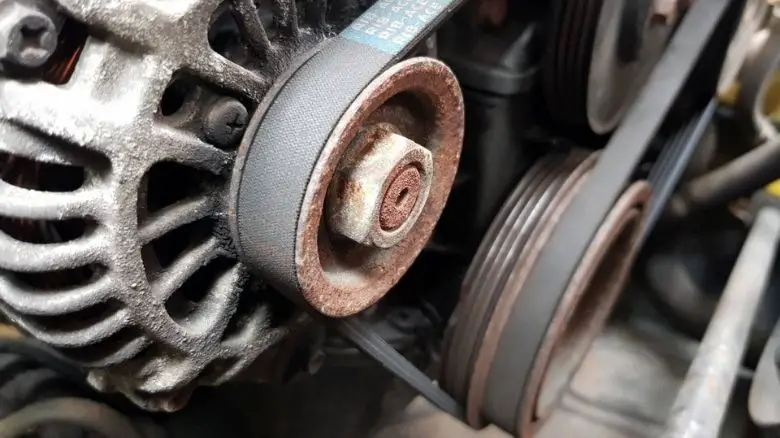Timing Belt Warning Signs
Table of Contents
Timing belt failure can be a catastrophic event, but prevention is better than cure and there are often warning signs to look out for.
A bad timing belt (also known as a cambelt) can eventually snap and can cause any number of expensive issues within your engine, including damaged pistons, bent valves, and even cylinder head damage.
Checking the health of your timing belt regularly will save you the hassle and stress of dealing with a damaged engine, not to mention the extreme costs involved.
Thankfully, most of the time you will be able to tell if your timing belt needs changing as a number of symptoms will present themselves.
We’ve put together a list of timing belt warning signs and symptoms for you to look out for:
Ticking, rattling or squealing sounds
When the timing belt is starting to wear out you may be able to hear ticking, rattling, or squealing sounds coming from the engine bay.
Over time, the rubber belt starts to degrade and sometimes the teeth can snap off. It can also become loose with age.
The belt is in constant motion when the engine is on and utilizes a series of pulleys to keep it taught. When a tooth snaps off or it becomes loose, it starts making an irregular sound.
Be careful though, as not all ticking and rattling sounds you hear from your engine bay are caused by a bad timing belt. These noises can come from other parts of the engine, particularly when there are problems with lubrication.
Either way, if you hear these unusual sounds from your engine, it’s best to get it checked out by a professional.
Car won’t start
Over time the timing belt can stretch, and belt tensioners can also fail. Both of these scenarios can lead to a loose timing belt, resulting in an engine that won’t turn over.
The belt is an essential part of the car as it controls when the valves open and close. Without it rotating as it should there’s absolutely no chance of the car starting.

This scenario is much more preferable than having your cambelt fail whilst driving, as it’s less likely that any serious engine damage has occurred.
Oil leak
Whilst there are a range of reasons a car may be leaking oil, if you spot oil emanating from the timing belt cover it’s usually a sign that your timing belt is failing.
This is thanks to the cover coming loose over time, usually caused by the vibrations, heat, and build-up of dirt that happen under regular driving conditions.
It could also happen if the cover has been damaged, perhaps as a result of a past mishap when working on the car, some debris striking it, or even a careless mechanic.
Check for signs of oil leaks and damage to your cambelt cover regularly.
Low oil pressure
Low oil pressure can cause a timing belt to break as it needs lubrication to function correctly. Without sufficient lubrication, it will rapidly start deteriorating.
A failing belt can also cause a drop in oil pressure if it’s not replaced quickly enough. The belt and camshaft will start disintegrating, potentially dropping pieces of rubber and plastic into the oil pan.
If this happens it can very quickly lead to catastrophic engine failure, and it’s unlikely the engine will ever run again without a costly rebuild.
Misfiring and erratic engine revs
Because the timing belt is so essential to the engine running smoothly, when it’s damaged, worn, or loose the engine is unable to function as it should.
This can be caused by the valves inside the cylinders opening and closing at incorrect intervals and putting the engine out of sync. It’s one of the clearest signs that something is wrong, and the car should be checked straight away.
Exhaust issues
The car’s engine will be put under far more strain when the timing belt is deteriorated, and be forced to work harder as a result.
Each cylinder forces exhaust gasses out through holes which open and close in time with the rotation of the timing belt. If the timing is incorrect, then excess fumes may find their way into the exhaust.

As with many of these symptoms, a smoky exhaust can be a sign of a number of issues. But whatever the cause, it’s definitely a cry for help from your car so don’t delay getting it inspected by a mechanic.
Loss of power
When an engine is under undue strain thanks to a timing belt issue, it’s likely that there will be far less power available to the driver.
The engine will be working hard just to keep going, let alone be able to provide the amount of power that’s needed for everyday driving.
If you have a cambelt that’s old and worn and you lose all power whilst driving along it may be too late. If the belt snaps whilst in motion, not getting it replaced sooner will have cost you a serious amount of money to get your car back on the road.
Engine warning light
With all the issues that a failing timing belt can cause, it’s bound to lead to the engine warning light illuminating in most cars.
The best way to check what’s causing the issue when the engine warning light comes on is to plug in an OBD2 scanner, which will read the fault codes your car is producing.
These are the same tools that mechanics use to diagnose faults, and can be purchased online relatively cheaply.
The engine warning light won’t always come on if the deterioration of the belt has gone unnoticed, which is why it’s always important to visually check your belt if you’re worried about its age.
Deteriorating rubber
It’s important to check your timing belt if you have no proof that it’s ever been changed and your car has built up significant mileage. The amount of time a belt lasts depends on the type of car, but the majority will need at least one replacement during its lifetime.
How do you check your timing belt?
Once in the engine bay, look for the rubber belt which is normally covered by a plastic or metal casing. You may need to remove the cover to access the belt.

The main thing to look out for is cracks which occur naturally over time as the rubber dries out, but can lead to the cambelt snapping if they’re allowed to keep growing.
Also check for any loose fibers or frayed edges as this could also be a sign that your timing belt is perilously close to failing.
The timing belt should be taught, so push down on it gently to see how much it flexes. If it’s loose, sooner or later it will start causing damage to the engine.
The teeth on the underside of the belt should also be checked. If any are damaged or are missing, it’s time to get the belt replaced.
Not every timing belt will be easily accessible, and be careful not to mistake other belts (such as the alternator and water pump belts) for the cambelt. If in doubt, seek assistance from a professional who knows how to access it and what signs to look out for.

It pays to know the warning signs to look out for when it comes to timing belt replacement. Spotting the symptoms early will save you a lot of money in the future, and will allow you to catch it before it breaks.
When we bought our 1995 Mazda MX-5 (Miata) here at The Car Investor, one of the first maintenance procedures we had carried out was to replace the timing belt.
The car had around 85,000 miles on the clock and we didn’t have any proof that it had been changed before. We didn’t want to take the risk on such an old car, so had it changed straight away.
By replacing the cambelt preventatively, you can help to extend the life of your car well into the future.
ABOUT THE AUTHOR
Adam Chinn writes about the intersecting worlds of classic cars, driving pleasure, and smart investment strategies. Starting his journey at 26, he’s proven that one doesn’t need to be wealthy to begin investing in classic cars.
Adam’s insights have been recognized on platforms such as MoneyInc, Swagger Magazine, and Top Speed.



